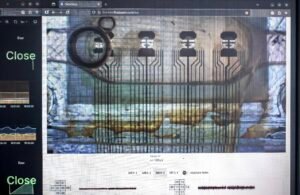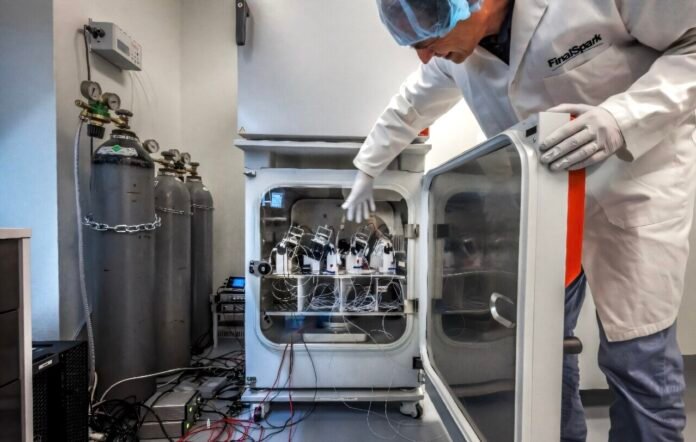In a groundbreaking experiment that blurs the line between biology and technology, scientists in Switzerland are using tiny clusters of living human brain cells—known as organoids—to function as rudimentary computer processors.
Inside a laboratory in Vevey, researchers at the biotech start-up FinalSpark nurture these miniature brains in nutrient-rich fluid to keep them alive. Unlike silicon chips, once these living processors die, they cannot be rebooted.

This emerging field, known as biocomputing or “wetware,” aims to harness the brain’s natural processing power to perform computations more efficiently than traditional hardware. FinalSpark’s co-founder, Fred Jordan, told AFP that he envisions brain-cell processors eventually replacing silicon-based chips used in artificial intelligence (AI) systems.
“Instead of trying to mimic the brain, let’s use the real thing,” Jordan said. He noted that biological neurons are “one million times more energy efficient” than artificial ones and can be reproduced indefinitely in the lab—unlike scarce and expensive AI chips from major manufacturers such as Nvidia.
However, the technology is still in its infancy and far from rivaling modern supercomputers. One lingering philosophical question also remains: could these lab-grown brain cells ever become conscious?
How It Works
FinalSpark begins by converting human skin cells from anonymous donors into stem cells, which are then transformed into neurons and grouped into millimeter-sized clusters called brain organoids—roughly the size of a fruit fly larva’s brain. Electrodes are attached to the organoids, allowing scientists to monitor electrical activity and stimulate them with small currents, mimicking the binary logic of digital computing.
Currently, ten universities worldwide are experimenting with FinalSpark’s organoids. At the University of Bristol, researcher Benjamin Ward-Cherrier used one as the “brain” of a simple robot that could differentiate between braille letters. Despite promising results, he noted that working with living tissue presents unique challenges, including the fact that the organoids eventually die—typically after about six months.
At Johns Hopkins University, researcher Lena Smirnova is using similar brain organoids to study neurological disorders such as autism and Alzheimer’s disease, hoping the research will lead to new treatments. She described biocomputing as “still pie in the sky,” but believes it could advance dramatically within the next two decades.
The Ethics and the Mystery
While none of the scientists believe the organoids are capable of consciousness, the research raises ethical and philosophical questions. FinalSpark collaborates with ethicists to ensure responsible experimentation. Jordan noted that the organoids contain about 10,000 neurons, compared to the human brain’s 100 billion, and lack pain receptors.
Yet, much about the brain remains unknown—even in these tiny models. Jordan revealed that when researchers open the incubator containing the organoids, neural activity spikes, despite the brain cells having no known way to sense the change.
“We still don’t understand how they detect the opening of the door,” he admitted, underscoring how much remains to be learned about the most complex organ known to science.
Nigeria: Three Dead, Others Injured as Trailer Crushes Tricycles in Onitsha
Source:Africa Publicity








